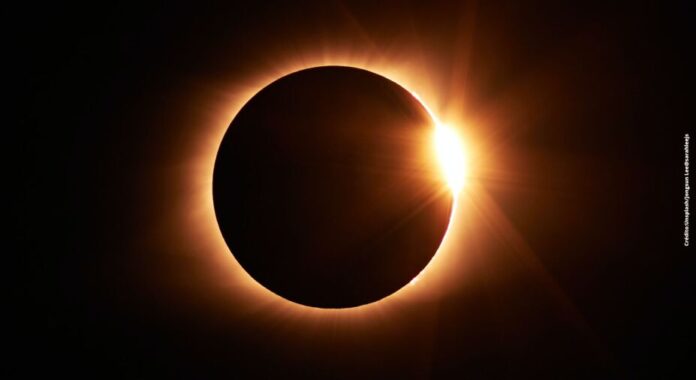An annular solar eclipse will take place on October 14 and will be visible in our country, although not in all states.
A spectacular astronomical phenomenon will take place this 2023 and can be seen from Mexico. It is an annular solar eclipse, which can also be observed from the United States, Belize, Honduras, Nicaragua, Costa Rica, Panama, Colombia and Brazil.
What is an annular solar eclipse?
An annular eclipse occurs when the Moon fails to completely cover the Sun, leaving a “ring of fire.” During this astronomical event, the satellite and the sun are perfectly aligned with the Earth, while our planet is at its furthest point.
The greater distance prevents the Moon from completely blocking our view of the Sun. Instead, a ring of light can be seen around the satellite. For this reason, annular solar eclipses are popularly called “ring of fire”.
When will the annular solar eclipse be?
The astronomical event will take place on October 14, so many people in Mexico are wondering what time it will be possible to appreciate this impressive spectacle in the sky, as well as how long it will last.
Where will the annular solar eclipse be visible?
As we mentioned before, the annular solar eclipse will cover the American continent, from the north to the south; however, in our country it will not be visible in all states and they will only be able to enjoy it in certain entities.
What time to see the annular solar eclipse?
In Mexico, the shadow of the Moon will pass through the states of Yucatán, Quintana Roo and Campeche. It will last 3 hours and 24 minutes, with an annularity of four minutes and 35 seconds, elapsed at the following times:
Start of the partial eclipse: October 14, 09:45:26.
Beginning of total eclipse: October 14, 11:22:25.
Peak of the annular solar eclipse: October 14, 11:24:42.
Completion of the total eclipse: October 14, 11:27:00.
End of the partial eclipse: October 14, 13:09:27.
In the case of Chetumal, capital of Quintana Roo, it will last 3 hours and 26 minutes, with an annularity of four minutes and 21 seconds. This will be the schedule of his trajectory:
Start of partial eclipse: Oct 14, 10:51:01
Start of total eclipse: Oct 14, 12:29:49
Peak: Oct 14, 12:31:59
Completion of the total eclipse: Oct 14, 12:34:10
Completion of the partial eclipse: Oct 14, 14:17:14
Source: TV Azteca






